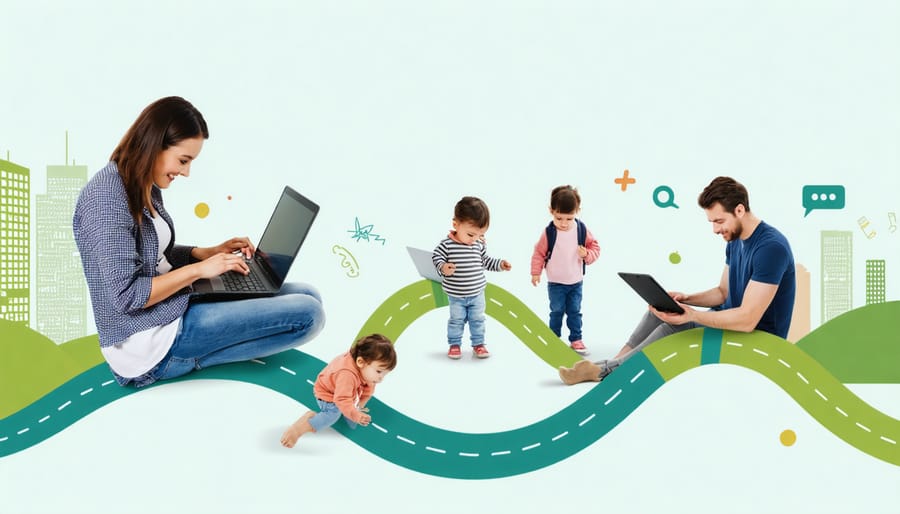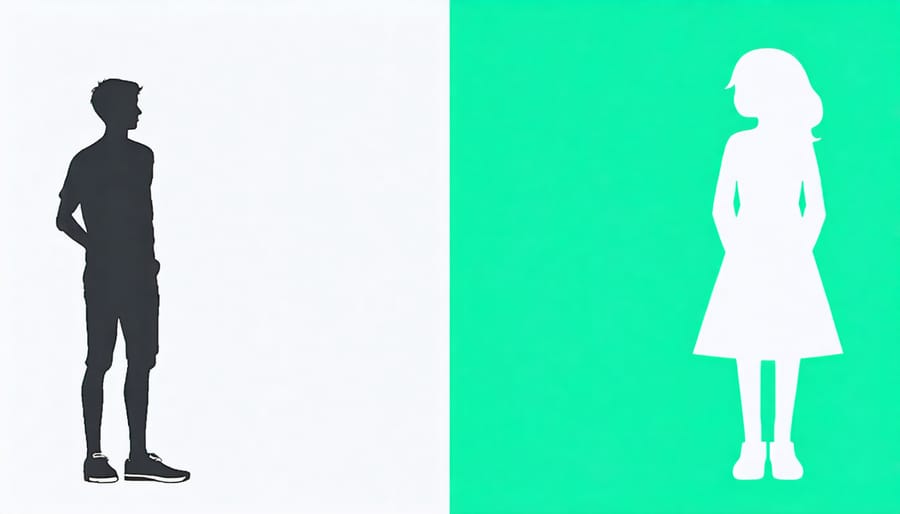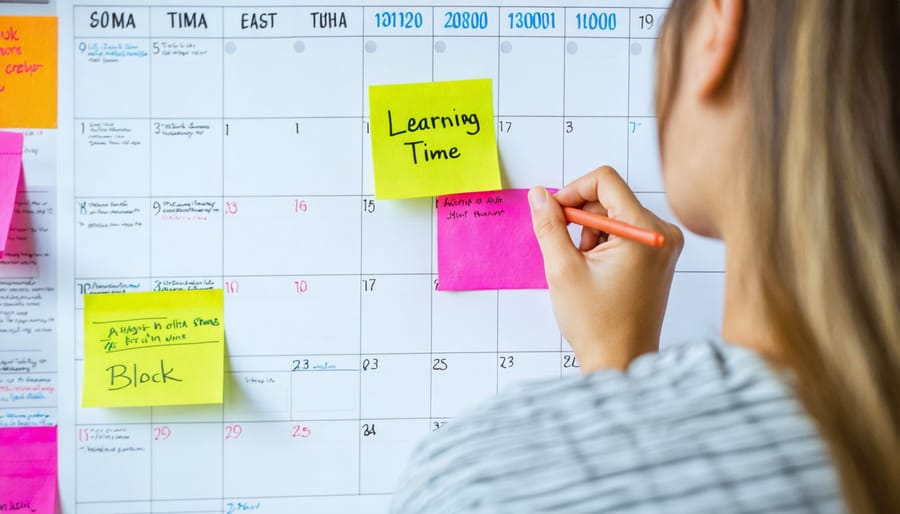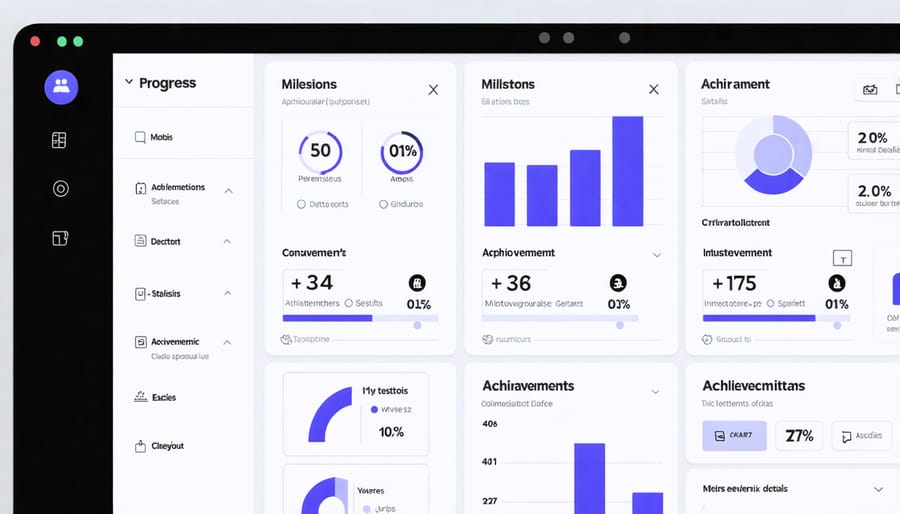
Transform your learning journey by creating goals that truly reflect who you are and where you want to go. Unlike generic learning objectives that often fall flat, personalized learning goals tap into your unique motivations, learning style, and life circumstances to create a roadmap that actually works.
Think of personalized learning goals as your custom-fitted educational GPS – they navigate you toward success while accounting for your specific needs, interests, and pace. Whether you’re mastering a new language at dawn before the kids wake up, developing professional skills during lunch breaks, or pursuing a passion project in stolen moments, these tailored objectives work with your life, not against it.
The beauty of personalized learning lies in its flexibility and authenticity. It’s about acknowledging that your journey might look different from someone else’s – and that’s exactly how it should be. By aligning your learning goals with your personal values, schedule, and preferred learning methods, you’re not just setting objectives; you’re creating a sustainable path to growth that feels natural and achievable.
Ready to design learning goals that actually stick? Let’s explore how to craft objectives that honor your unique circumstances while pushing you toward meaningful growth.
Why Traditional Learning Goals Often Miss the Mark

The Problem with Cookie-Cutter Learning Plans
Remember those one-size-fits-all workout plans or crash diets that promise amazing results for everyone? Learning plans often fall into the same trap. Just as we all have different bodies, schedules, and fitness goals, we also have unique learning styles, preferences, and circumstances that make standardized approaches less effective.
I learned this firsthand when trying to follow a popular language learning program that insisted on the same daily routine for all students. While some thrived with their morning vocabulary drills, I found myself struggling to stay awake – let alone retain information – during those early sessions. The reality is that cookie-cutter learning plans often overlook crucial factors like your natural energy cycles, existing commitments, and preferred learning methods.
Think about it: How can the same approach work equally well for a busy mom studying between soccer practices, a night-shift worker hoping to advance their career, and a retiree learning for pure enjoyment? It simply can’t. When we try to force ourselves into a predetermined learning mold, we often end up feeling frustrated, discouraged, and ready to give up on our goals entirely.
Your Life, Your Rules: The Power of Personalization
Remember when you tried following someone else’s study schedule and it just didn’t work? That’s because your learning journey is as unique as your fingerprint. What works for your colleague or best friend might not align with your lifestyle, commitments, or natural learning rhythm.
The beauty of personalizing your learning goals lies in their perfect fit with your reality. As a mom juggling work and family, you might find early morning study sessions more productive. If you’re a night owl working flexible hours, evening learning blocks could be your sweet spot. It’s about working with your natural tendencies, not against them.
Think of personalization as your learning compass. It considers your current knowledge level, preferred learning style, available time, and even your energy patterns throughout the day. When you align your goals with these personal factors, you’re not just setting objectives – you’re creating a sustainable path to success.
By embracing personalized goals, you’ll find yourself more motivated and less likely to give up. After all, these goals aren’t arbitrary benchmarks; they’re milestones designed specifically for your journey.
Creating Your Perfect Learning Blueprint
Define Your Why
Let’s be honest – we’ve all signed up for courses or started learning projects with great enthusiasm, only to lose steam a few weeks later. The secret to staying motivated lies in understanding your “why.” Think of it as your personal North Star, guiding you through those moments when motivation dips.
Take a moment to reflect on what truly drives you. Are you learning to advance your career, pursue a passion project, or simply feed your curiosity? Your motivation might be as practical as earning a promotion or as personal as wanting to set an example for your children. Whatever it is, it needs to resonate deeply with you.
I discovered this myself when learning photography. Initially, I thought I just wanted to take better vacation photos, but through mindful practices and self-reflection, I realized my true motivation was to capture meaningful moments with my family. This deeper understanding kept me committed when technical challenges arose.
Remember, your “why” might evolve over time, and that’s perfectly okay. The key is staying connected to your purpose and letting it fuel your learning journey.
Map Your Time Reality
Let’s be honest – we’ve all been guilty of setting ambitious learning goals without really considering our daily schedules. I remember downloading a language learning app, convinced I’d dedicate two hours every evening to mastering Spanish. Three weeks later, reality hit: between work deadlines, family commitments, and essential self-care, those two hours were more wishful thinking than practical planning.
The key to successful learning goals starts with a realistic time audit. Grab your calendar and track your activities for a week – everything from morning routines to evening wind-downs. Look for those hidden pockets of time: your commute, lunch breaks, or those 20 minutes while waiting for the kids at soccer practice.
Next, consider your energy levels throughout the day. Are you a morning person who’s sharp at 6 AM, or do you hit your stride after lunch? Match your learning schedule to your peak performance times. Remember, consistency matters more than duration – fifteen focused minutes daily beats an irregular two-hour session.
Pro tip: Build in buffer time for unexpected events. Life happens, and having flexibility in your schedule helps maintain momentum without feeling overwhelmed when things don’t go as planned.

Identify Your Learning Style
Have you ever noticed how some people can listen to a podcast and absorb everything, while others need to see information written down to truly understand it? That’s because we all have unique learning styles that shape how we best process and retain information.
I discovered my own visual learning style when I struggled with audio books but thrived with mind maps and diagrams. Understanding your learning style is like finding the right key to unlock your potential – it makes everything click into place.
There are three main learning styles to consider: visual (learning through seeing), auditory (learning through hearing), and kinesthetic (learning through doing). Take a moment to reflect on your past learning experiences. Did you excel when watching video tutorials? Perhaps you retain information better through group discussions? Or maybe you’re the type who needs to practice hands-on to really grasp a concept?
Try experimenting with different learning methods for a week. Take notes on which approaches feel most natural and effective for you. This self-awareness will become your superpower in crafting learning goals that actually stick and deliver results.
Set Milestone Markers
Think of milestone markers as your personal cheerleaders along your learning journey. I remember when I started learning photography – breaking down my goal of “becoming a professional photographer” into smaller, measurable achievements made the whole process feel less overwhelming and more attainable.
Start by identifying 3-4 key checkpoints that signal meaningful progress. These could be completing specific modules, mastering particular skills, or reaching quantifiable targets. For instance, if you’re learning a new language, your milestones might include “hold a 5-minute conversation” or “read a children’s book without translation.”
Make these milestones SMART: Specific, Measurable, Achievable, Relevant, and Time-bound. Instead of “improve writing skills,” try “complete three blog posts with positive feedback from my writing group by the end of next month.”
Track your progress visually – whether it’s through a bullet journal, a digital app, or simple sticky notes on your mirror. Celebrate each milestone you reach, no matter how small. These celebrations reinforce your commitment and maintain momentum. Remember, these markers aren’t just about measuring progress; they’re about building confidence and maintaining motivation throughout your learning journey.
Making It Work in Real Life
Building Flexibility Into Your Plan
Life has a way of throwing curveballs at our carefully laid plans, and that’s perfectly normal! The key to maintaining progress toward your learning goals is building flexibility into your strategy from the start. Think of your learning plan like a rubber band – it needs to stretch and adapt without breaking.
Just as we integrate self-care and wellness habits into our daily routines, we need to build adaptability into our learning journey. Start by identifying potential obstacles that might arise – perhaps a busy season at work, family commitments, or travel plans. Then, create backup plans for these scenarios.
Here’s what this might look like in practice: If you typically dedicate an hour each evening to learning, have a 15-minute alternative ready for especially hectic days. This could mean listening to a relevant podcast during your commute or reviewing flashcards while waiting in line at the grocery store.
Consider creating a “minimum viable learning day” – the absolute baseline of what you need to do to maintain momentum. Maybe it’s reviewing just three vocabulary words or reading one page of material. This keeps you connected to your goals without feeling overwhelmed when life gets chaotic.
Remember, flexibility doesn’t mean letting yourself off the hook entirely. It’s about finding creative ways to stay committed while acknowledging that some days will look different than others. The most sustainable learning plans are those that bend with life’s demands rather than fighting against them.
Track your adaptations and celebrate the small wins – even modified progress is still progress. This mindset shift from rigid expectations to flexible achievement helps maintain motivation and prevents burnout in the long run.
Tracking Progress Your Way
Remember when we used to rely solely on traditional progress reports and generic checklists? Those days are behind us! Today, I’m excited to share how you can track your progress effectively in ways that actually resonate with your personal style.
Think of tracking progress like choosing the perfect outfit – it should fit you just right! Some of us are visual learners who thrive with colorful charts and vision boards. I personally love using a bullet journal to map out my learning milestones with creative spreads and fun stickers. Others might prefer digital apps that send encouraging notifications or detailed spreadsheets that capture every small win.
The key is finding what motivates you. Maybe you’re energized by sharing your journey on social media, where your community can cheer you on. Or perhaps you’re more private, preferring a simple notebook where you can reflect on your growth through thoughtful journaling.
Consider mixing different tracking methods throughout your journey. On busy days, a quick voice memo might work best. During quieter moments, you might enjoy creating detailed mind maps or recording video diaries. The beauty of personalized tracking is its flexibility – you can adjust your methods as your needs change.
Remember to celebrate the small victories! Whether it’s mastering a new concept or consistently showing up for your learning sessions, acknowledging progress in your own way keeps the momentum going. Your tracking system should feel like a supportive friend, not a strict taskmaster.

Staying Motivated When Things Get Tough
Let’s be honest – we’ve all been there. You start strong with your learning goals, full of enthusiasm and determination, but then life throws a curveball your way. Maybe it’s an unexpectedly busy week at work, a family commitment, or simply that dreaded mid-journey slump. The key to success isn’t avoiding these challenges but learning how to navigate through them gracefully.
One of the most effective strategies I’ve found is breaking down your larger goals into smaller, more manageable chunks. Instead of feeling overwhelmed by “mastering Spanish,” focus on learning five new words today. This approach makes progress feel more achievable and helps maintain momentum when motivation wanes.
Creating a support system is another game-changer. Share your learning journey with friends, join online communities, or find an accountability partner who shares similar goals. Sometimes, just knowing someone else is cheering you on can make all the difference in maintaining engagement with your learning path.
Remember to celebrate small wins along the way. Did you practice for 15 minutes when you really didn’t feel like it? That’s worth acknowledging! These mini-celebrations help build positive associations with your learning journey and create momentum for future success.
When motivation dips, try connecting back to your ‘why.’ Keep a journal where you document your learning journey, including your initial motivation for starting. On tough days, reading through these entries can reignite your passion and determination.
Finally, be kind to yourself. Some days won’t go as planned, and that’s perfectly okay. Instead of viewing setbacks as failures, treat them as valuable learning experiences. Adjust your approach if needed, but never lose sight of the fact that every step forward, no matter how small, is progress worth celebrating.
Remember, your learning journey is as unique as you are, and that’s what makes it beautiful. By setting personalized learning goals that align with your interests, lifestyle, and aspirations, you’re taking control of your growth in a way that truly works for you. Whether you’re mastering a new language, developing professional skills, or exploring a creative passion, the key is to stay flexible and kind to yourself along the way.
I’ve seen firsthand how transformative personalized learning can be – from a busy mom who carved out 15 minutes each morning to learn photography, to a career-switcher who achieved her tech certification through bite-sized daily goals. Your path might look different, and that’s exactly how it should be.
So, take that first step today. Start small, stay consistent, and watch as your customized learning journey unfolds. Remember, every expert was once a beginner, and your perfect learning path is waiting to be discovered.



